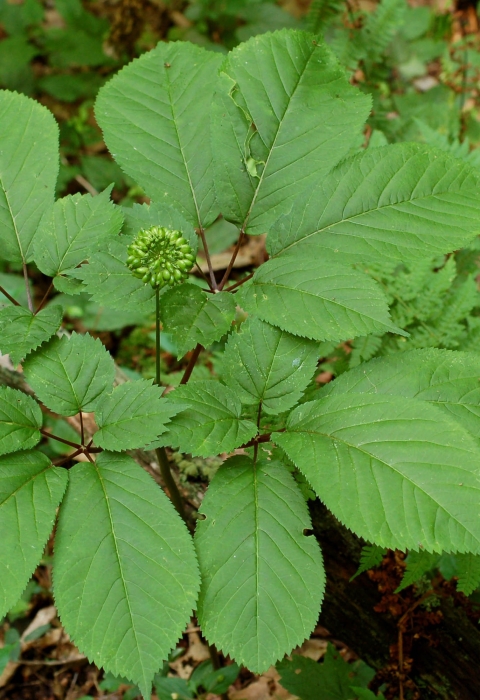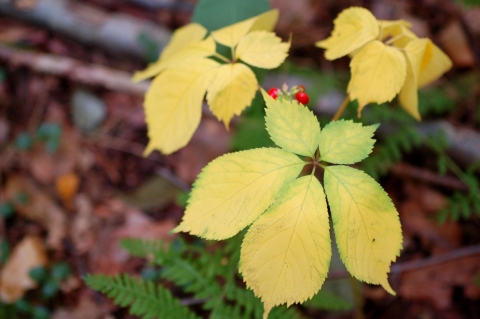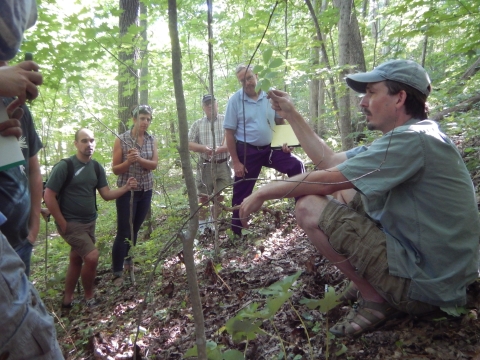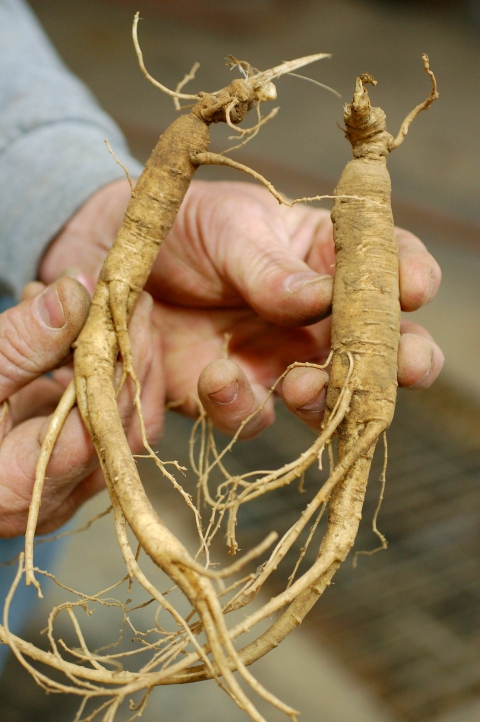American ginseng has deep roots in the history and forests of Appalachia and the Ozarks.
With a selling price of $500 or more per dry pound, wild ginseng is one of the most coveted and valuable medicinal plants harvested commercially in the U.S. People are drawn into the woods to find, dig, and sell ginseng, sometimes illegally.
So, why does a pound of ginseng cost as much as an iPad?
Here’s what I learned from Dr. Eric Burkhart, a faculty member at Penn State University and a native of the commonwealth, who for the past 17 years has been studying ginseng and teaching people — including law enforcement officers — about how to responsibly conserve and cultivate the plant.
For centuries, there has been a demand for wild ginseng in eastern Asia, where it is claimed to strengthen the body against stress and disease. Between 60,000 and 160,000 pounds of wild ginseng are exported from the U.S. each year, primarily to Hong Kong.
Ginseng isn’t a sexy commodity. Without showy flowers or foliage, the plant’s appearance is unremarkable three seasons of the year. Come autumn, though, its leaves turn golden yellow and it produces red berries, drawing collectors to its colorful splash in forest hollows.
The challenge in protecting wild ginseng is that over-harvesting the plant during the summer months when it produces seeds can be devastating to its reproduction. Ginseng takes about five years to grow berries, and collectors have destroyed entire populations by digging up every fruit-bearing plant in sight.
Operation Root Cause
Pennsylvania is one of 19 states that has established a harvest season and regulations for the stewardship of wild ginseng populations. It is legal for diggers to collect mature ginseng plants and their roots in Pennsylvania forests from September 1 to November 30. They are required to plant berries from the harvested ginseng in the area where they’ve been taken, along with other conditions.
Sometimes, though, it takes law enforcement action to keep diggers and dealers in check.
Operation Root Cause is one of the largest commercial ginseng cases ever prosecuted, and it brought 14 people to justice earlier this year. A U.S. Fish and Wildlife Service special agent, with assistance from Pennsylvania wildlife conservation officers, worked undercover in the commonwealth over two harvest seasons to gather evidence and build the case.
Through federal court adjudications, $41,000 in fines were imposed for the illegal harvest and sale of ginseng, and three dealers lost their permits to sell and export ginseng products.
Conservation through cultivation
The Pennsylvania Department of Conservation and Natural Resources, with trade data from licensed ginseng dealers, estimates that at least 11 million wild ginseng plants have been harvested from the commonwealth for commercial trade since record-keeping began in 1989.
The research Dr. Burkhart conducts with his students at Penn State supports sustainable use and stewardship of wild ginseng in Pennsylvania and throughout Appalachia. He describes how a ginseng forest farming industry has emerged in Pennsylvania. Landowners are growing “wild-simulated” ginseng as a specialty crop in natural forest settings to supplement the growing scarcity of wild plants and bolster conservation efforts.
This success has led to another unfortunate challenge. Ginseng farms have become a target for theft, and illegal diggers can wipe out a crop that took years to cultivate in just a few hours or days.
People are also growing ginseng in field plots using artificial shade, although it’s not proven easy to duplicate the appearance and quality of forest-grown plants. Like wine connoisseurs, experienced wild ginseng traders have a finely honed “nose” and can distinguish differences between forest and farmed plants that the average person wouldn’t notice.
Field cultivated roots fetch $50 per pound, just a tenth the amount of their wild cousins.
A story with deep roots
The over-harvest of wild ginseng is not a new story. Dr. Burkhart shared a July 1783 excerpt from Bavarian scholar Johann David Schöpf’s account of his journey to Pennsylvania that offers a glimpse into early ginseng harvest and trade:
“A man met us who was taking to Philadelphia some five hundred pounds of ginseng-roots on two horses. He hoped to make a great profit because throughout the … war little of this article was gathered, and it was now demanded in quantity by certain Frenchmen…in these mountains the plant is still common, but in the lower parts it has pretty well disappeared”
And a hundred years later the problem had grown. In 1897, George Butz, an agricultural researcher at the Pennsylvania State University, wrote:
“It is probable that every county in Pennsylvania has been hunted over for ginseng …The practice of collecting the roots during the summer months before the crop seed has ripened, and of taking every root in sight, however small, has very naturally resulted in greatly diminishing the quantity of wild root available for exportation.”
By being good stewards and adhering to the law, diggers and dealers can continue the long tradition of collection, reap a profit, and ensure that there will be colorful yellow and red bursts of ginseng in Pennsylvania hollows for autumns to come.
______
Dr. Burkhart has published a number of reports on ginseng and other specialty forest crops. American ginseng has been protected under CITES by the U.S. Fish and Wildlife Service since 1975. The penalties found in Operation Root Cause related to violations of the Lacey Act.







